Harvest 2025 draws to a close, interrupted but not derailed by rain
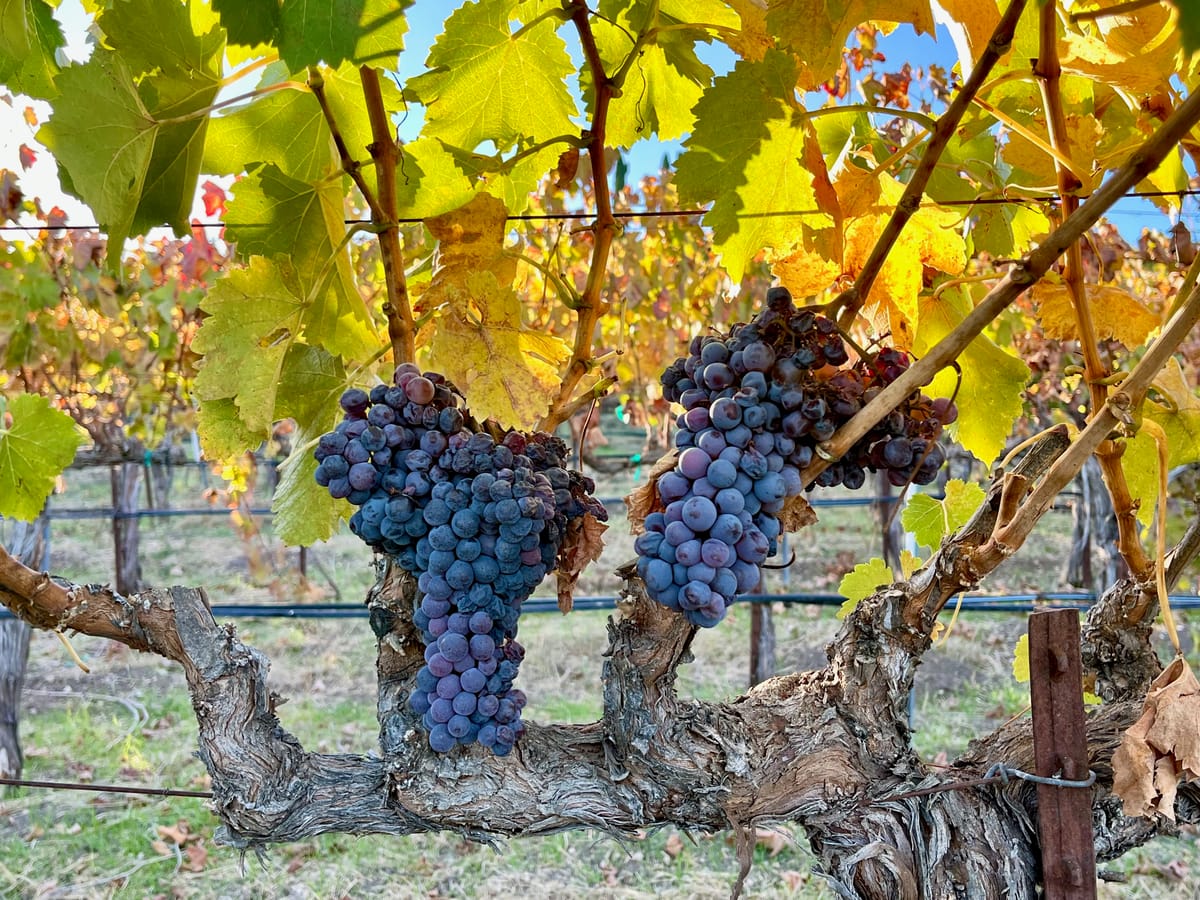
Early Tuesday morning, we brought in Mourvedre from our Scruffy Hill block. Ian got up early to document it, and got some dramatic photos that he shared in our social media feeds, including the below cover photo:
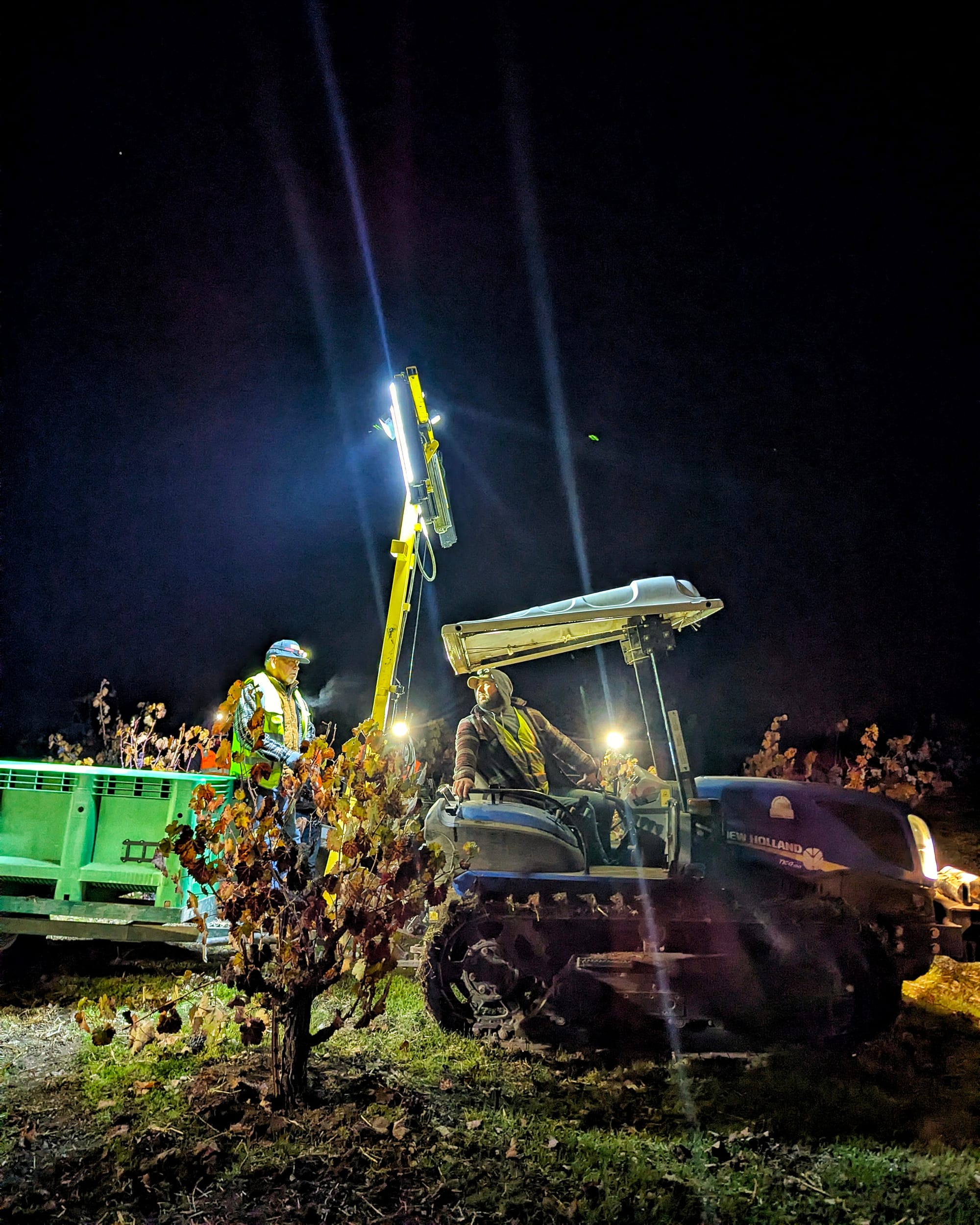
With that pick, we have brought in our last substantial block and are probably 97% finished overall. It's a good moment to look back and assess some of what we saw.
Even without what's still to come, yields look significantly recovered from last year, across all the categories we measure. Reds are up 20.8% over last year's final total, while whites are up 26.6%. Early varieties (in these I count Viognier, Vermentino, Grenache Blanc, and Syrah) are up 15.2%, while mid-season varieties (Grenache, Marsanne, and Clairette Blanche) are up 49.1% and late-ripening varieties (Mourvedre, Roussanne, Counoise, and Picpoul) are up 33.8% with some lots still to come. Most of this is great, and welcome. I think we have a good shot to make some varietal wines this year that we haven't done in a while, including Clairette Blanche and Picpoul. I am a little worried about what we're going to do with the 110 tons of Grenache Noir that we harvested (13 more tons than the epic Grenache harvest of 2023) but on the scale of problems to have, that's not a terrible one.
The big event of this harvest will have been the rainstorm that blew through on October 14th. You can see the growing degree day curve flatline on that date. We're now securely cooler than average, though still notably warmer than 2023.
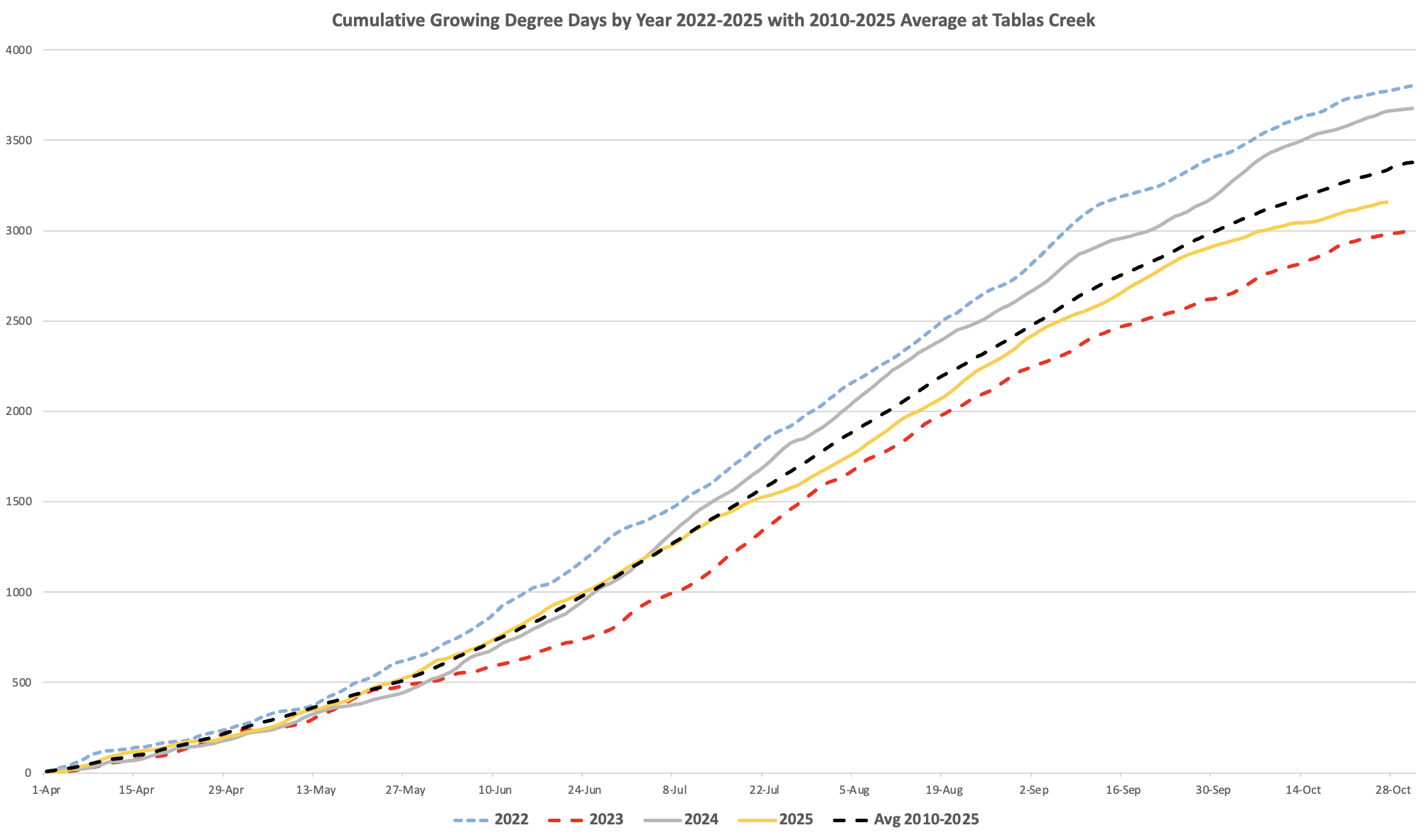
Luckily, we had good warning and were able to make a push to bring in the things that were close and fragile enough that we worried about their integrity. After all, we already got a small rainstorm in September, and each successive rain event increases the risks. That meant harvesting through the weekend of October 11th and 12th and completing one of our busiest days of harvest (11 separate lots totaling over 48 tons) the day before the storm, on Monday, October 13th.
The rain came down hard on the 14th, dropping 1.67" in total, and it took a while for it to warm up again. We didn't make it out of the 60s until Friday. Those conditions are tough because without heat, you have the risk of rot spreading through the vineyard. In this video, Director of Vineyard Operations Austin Collins took viewers into one of our Roussanne blocks that weekend to assess the impact and share what we were doing to mitigate our risks:
View on Threads
The rain brought harvest to a stop for more than a week, but about a week ago the weather turned benign again, and it looks like we've got an easy runway to get the last of the fruit in without additional stress. That's great, and it's nice to have the pressure off. We've already been at it for 10 weeks, three weeks longer than last year. We've still likely got another week or so.
The cellar is enjoying this more relaxed pace. During the couple of weeks before the storm, everyone was working at a full sprint, harvesting and destemming new red grapes, harvesting and pressing new white grapes, and also pressing red lots that had reached the level of extraction we wanted. Now, when we press a lot (like the Grenache, below) it probably means a free tank.
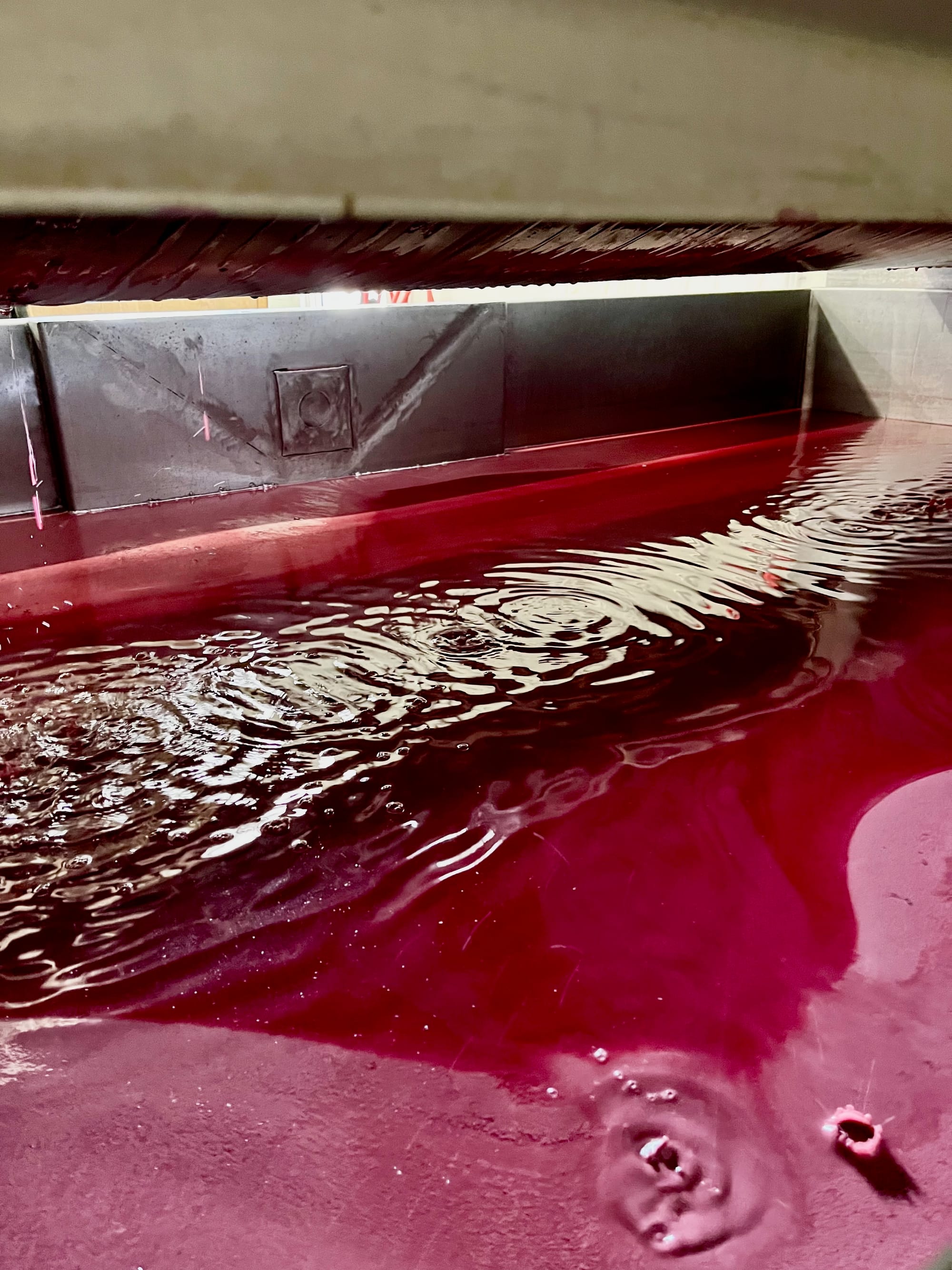
All the pressing means lots of press cleaning, which means impromptu clotheslines on the crushpad:

Meanwhile, we're enjoying the changing colors in the vineyard. The combination of newly sprouted grass thanks to the early rain and autumn leaves is rare in this climate where it often freezes before it rains:

The golden tones of the vineyard foliage makes for a lovely contrast to the deep green oak trees, particularly in the setting sun:
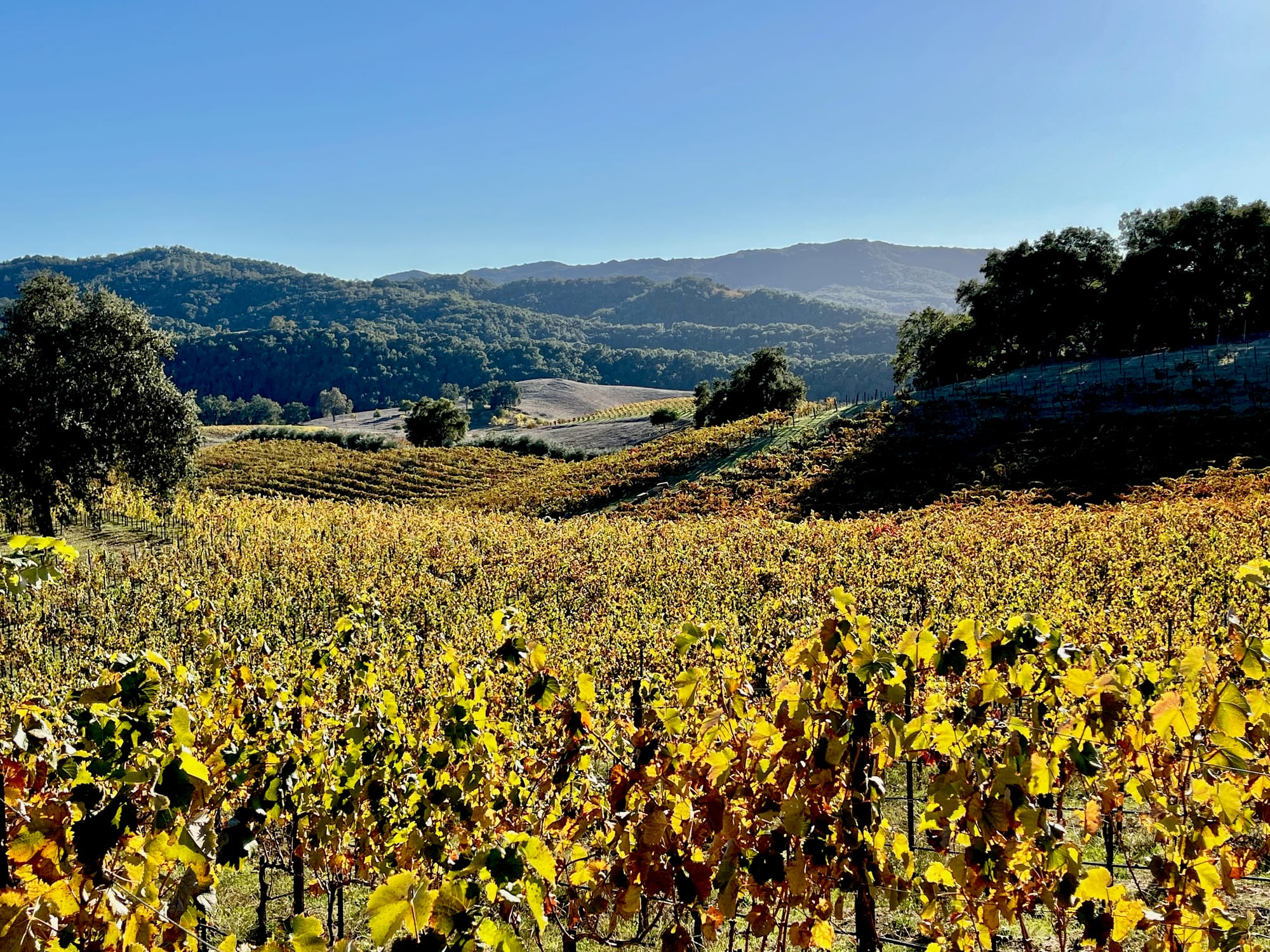
So, what's still hanging? Some lagging lots of Bourboulenc, Picardan, and Picpoul that we'll likely bring in over the next few days. Some lots of Tannat and Counoise whose stubbornly low pH readings seem like they could use an extra week, which we can give them as we're not worried about weather. And, of course, Roussanne, which always seems determined to be the last in the cellar. It's a great time of year to see the russet color that gives the grape its name:
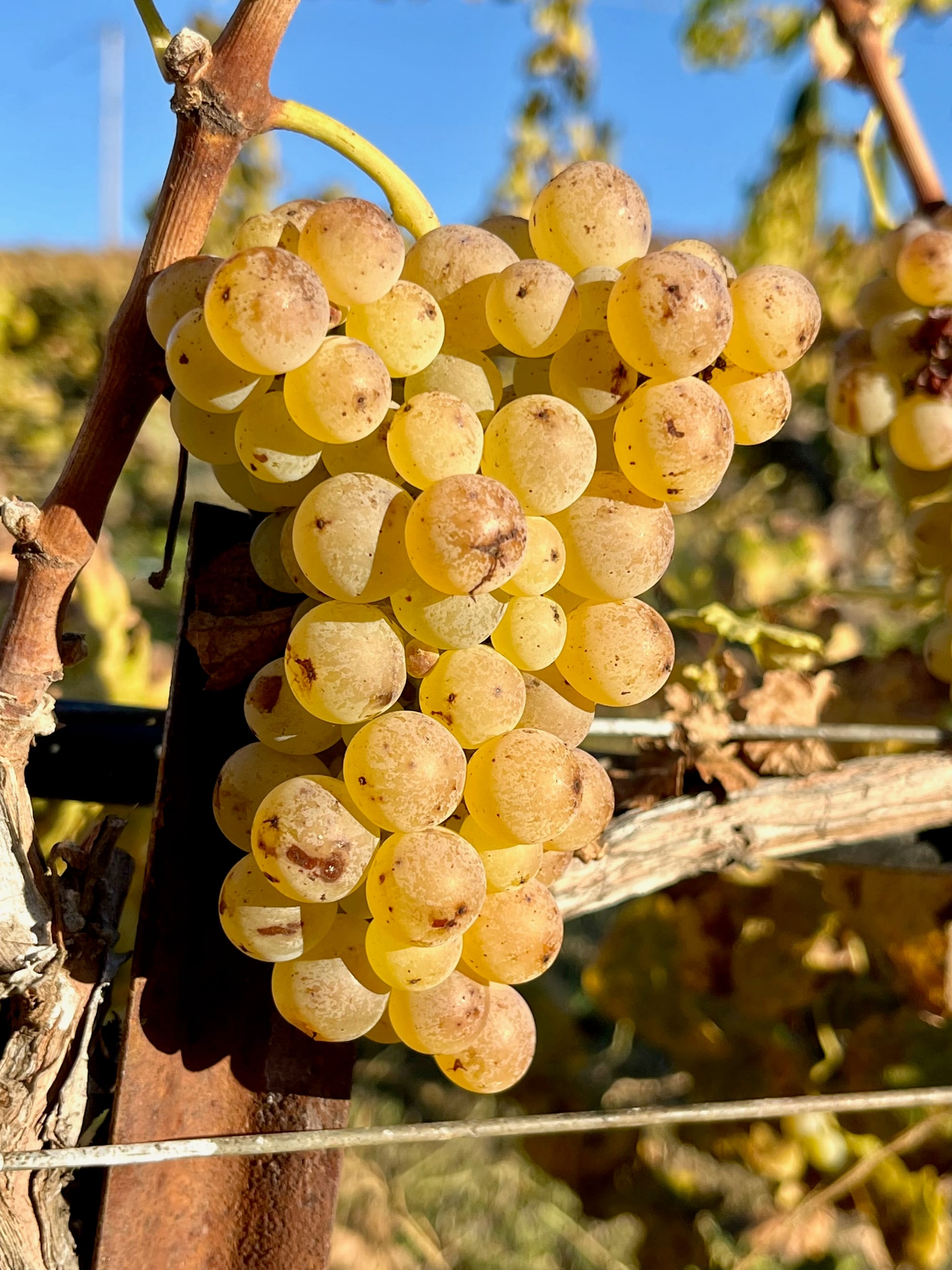
We're also using the time to prepare the vineyard for winter, including laying out straw on the unimproved vineyard roads to reduce our risk of erosion:
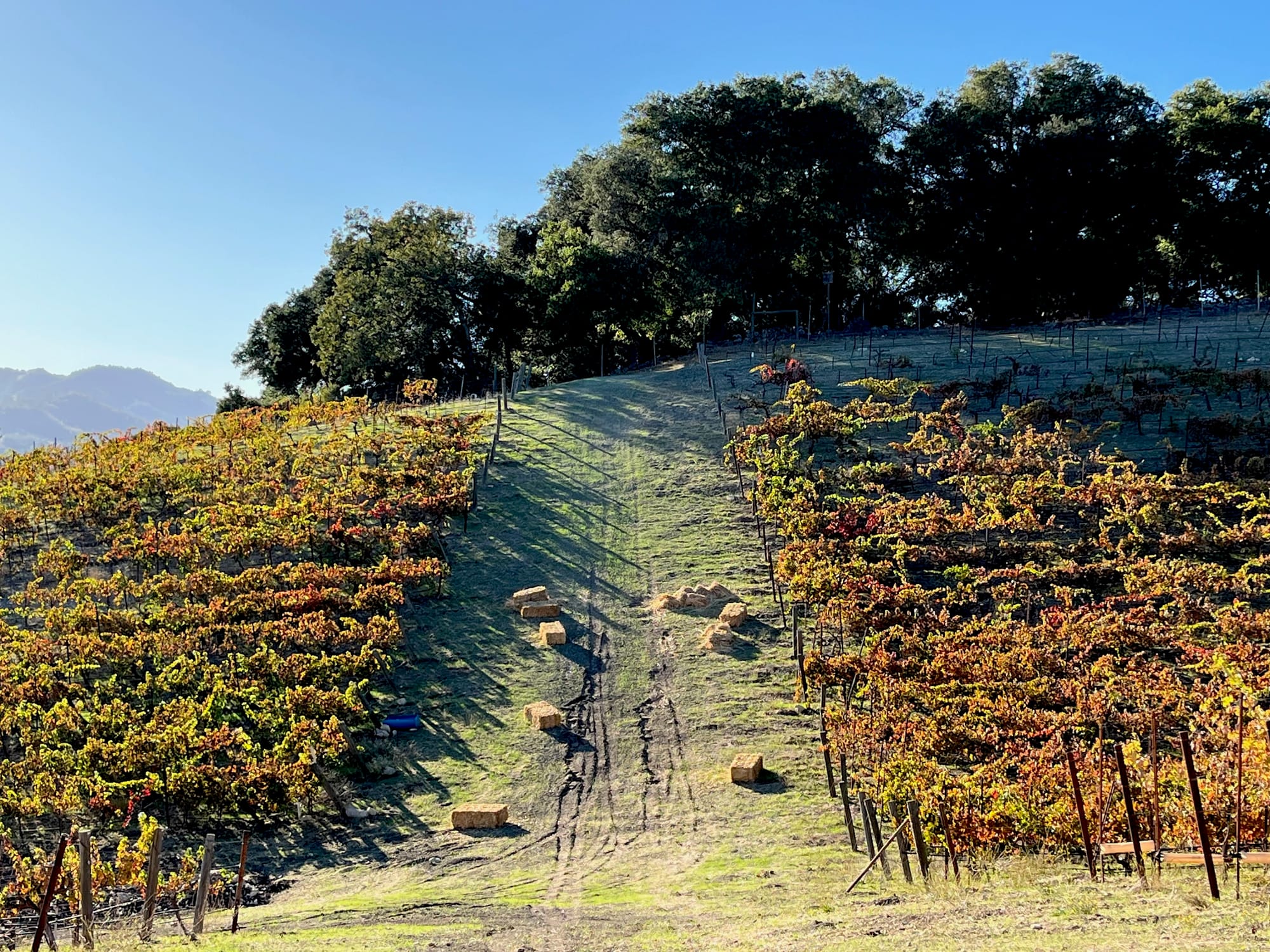
And spreading compost in areas that need an intensive boost to their nutrition:

The harvest chalkboard reached its capacity last week. We've picked seven lots since then, with more to come. We'll have to figure out some way to reflect this visually:
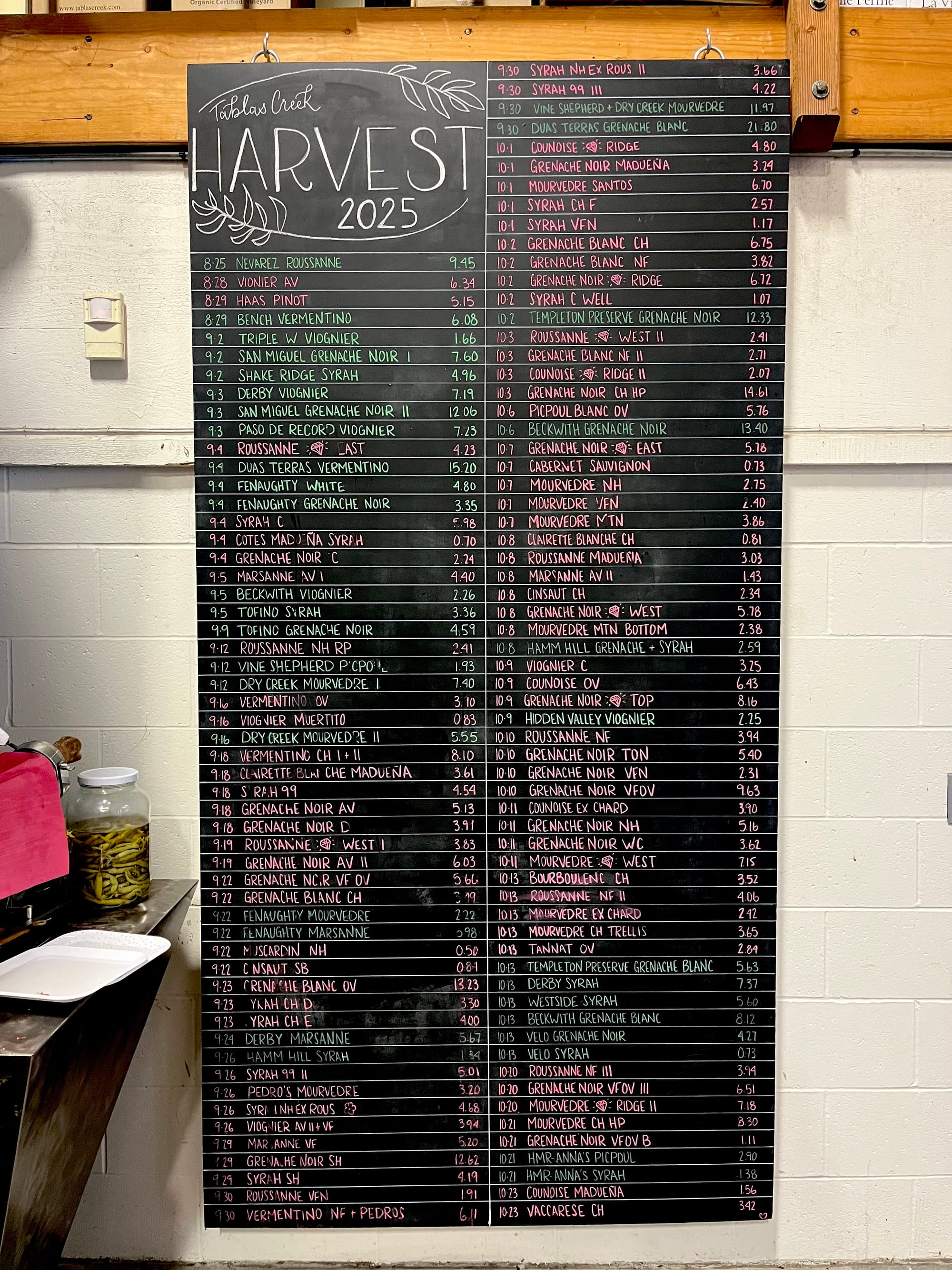
But while there are logistical pieces still to figure out, and of course plenty of lots to press and guide through fermentation, it feels like the pressure is off. With yields more than 20% better than last year, and quality looking good, we know we'll have great options come blending.
Between the high quality and the solid yields, we're all sleeping better than we were a couple of weeks ago. Having finished our night harvests helps too.

